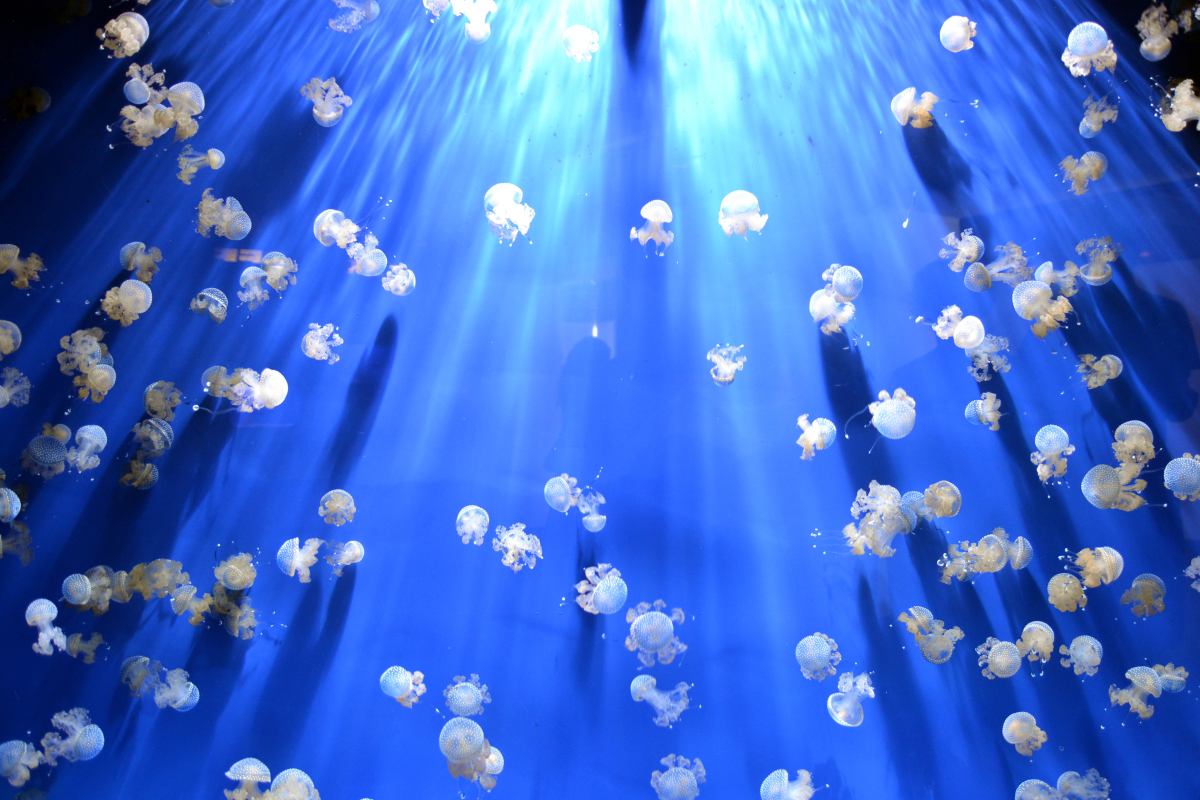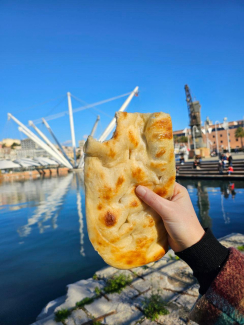
The ten things (plus one) not to be missed in Genoa
10 things (plus one) not to miss in Genoa. Things that you always wanted to know but never dared ask. To make sure you don't miss anything, though not missing something in a city like Genoa is practically impossible…
1. The Historic center - Or rather, becoming lost so as to truly experience it. Among the largest in Europe, Genoa's historic center is undoubtedly the most genuine (https://www.visitgenoa.it/centro-storico). A labyrinth where you lose yourself only to find yourself again and again. It is impossible to really be lost, especially if you follow the route of one of the guided tours that navigate it in calm tranquility. Its many “botteghe” historic shops - patisseries, confectioners' and chocolatiers, clothe shops, shoeshops, haberdashers and tailor's, but also trattorias, shops selling traditional fried food, tripe shops, butchers', delicatessens and grocers' - which, in an age of “global” brands, are windows on another era, one steeped in local knowledge, patience and intense attention to detail (https://www.visitgenoa.it/alla-scoperta-delle-botteghe-storiche).
2 - Strada Nuova and the Palazzi dei Rolli - 'Genoa, superb for its men and its walls...' wrote Petrarch. Strada Nuova, location of the city’s Town Hall and some of the worlds most magnificent historical palazzi, is the epitome of that splendor. Here are some of the many Palazzi dei Rolli
(https://www.visitgenoa.it/rolli), sumptuous noble residences that the city’s aristocracy made available to support the diplomatic policy of the ancient Republic of Genoa hosting ambassadors and dignitaries visiting the “Superba”. Today they house the prestigious art collections of the Strada Nuova Museums (https://www.visitgenoa.it/musei-di-strada-nuova-0.)
3 - Porto Antico and the Waterfront - The highlight of this particular Genoese summer is the inauguration of the Genoa’s new eastern Waterfront designed by “archistar” Renzo Piano. A development which gives the city back its sea and creates an uninterrupted promenade, without so much as a pedestrian crossing, from Porto Antico to the ancient fishing village of Boccadasse (https://www.visitgenoa.it/porto-antico).
4 - Boccadasse - This characteristic fishing village with its brightly colored houses clinging to the rocks is an essential stop to experience the atmosphere of a small Mediterranean fishing village hidden within a busy city. It is within the walls of one of its houses, or so it is said, that the cat from the song “Il cielo in una stanza” by Gino Paoli purred. Dinner by the beach, with the sea lapping ceaselessly on the beach is the ideal setting for the play of relaxed conservation and the perfect conclusion to a warm summer’s evening, though it is also hard to beat at any other time of the year (https://www.visitgenoa.it/boccadasse-e-corso-italia.)
5- Nervi - just a little further, lengthening our walk to pass the rock of Quinto which saw Garibaldi company of “the Thousand” set sail for Sicily, you reach Nervi (https://www.visitgenoa.it/nervi). The Eastern border of the city, where the embrace of the sea is transformed into a panoramic walkway overlooking the cliffs offering (the slightly adventurous) access to the waves, a range of restaurants and trendy bars, and ending in a small pebble beach smoothed by the constant motion of the waves. Immediately behind you lies the shady greenery of the “Parchi di Nervi” (https://www.visitgenoa.it/parchi-di-nervi) and the fragrance of its rose garden. The park is the venue for the Nervi Music Ballet Festival, a programme of dance and shows performed in a truly unique setting, here you can also find Nervi’s Museums (https://www.museidigenova.it/it/musei-di-nervi) including the Galleria d'Arte Moderna, the Raccolte Frugone and the Wolfsoniana, a precious jewel box of a museum dedicated to art, design and publicity from of the early twentieth century, it is equaled only by its “sister” site, the Wolfson Foundation in Miami.
6 – The Chiossone Museum of Oriental Art and Castello d'Albertis – It is to two restless Genoese travellers, who knew how to leave Genoa for distant destinations but who always knew how to return, that we owe these two collections, without which even the most perfunctory glance at the art treasures that Genoa holds would be incomplete. The Chiossone Museum (https://www.visitgenoa.it/museo-darte- orientale-edoardo-chiossone-0) boasts one of the largest collections of Japanese art in Europe, it is the legacy of Edoardo Chiossone, Genoese illustrator and engraver who was invited by the Japanese Emperor to redesign Japan’s banknotes for the national mint. It is to him that the Land of the Rising Sun owes the modern look of the banknotes that would become a physical expression of the country’s financial power. The flavour of distant lands is also found at Castello d'Albertis (https://www.visitgenoa.it/castello-dalbertis-museo-delle-culture-del-mondo), a somewhat eccentric neo-Gothic “Castle” with a splendid panorama of the city. Captain Enrico Alberto d'Albertis, a nineteenth-century navigator and traveler, furnished his home with finds collected on five continents. A visit to the Museum of World Cultures which is housed there today is a journey through chambers of wonders, with a strong flavour of turn of the century seafaring, as well as Colombian and colonial “trophies” and artifacts from a time when the “Old” Continent was thought of as the center of the world.
7 - Palazzo Ducale - Overlooking both Piazza De Ferrari and Piazza Matteotti, right in the center of the city's “living room”, this ancient building was once the residence of the Doge and the seat of political power in Genoa, then known as the queen of the seas. Today the Palazzo is the city's cultural hub (https://www.visitgenoa.it/palazzo-ducale), a “port” of culture always open and offering a rich programme of conferences, exhibitions (both national and international), events, festivals and opportunities for in-depth study. One can also visit its Torre Grimaldina (https://www.visitgenoa.it/evento/torre-grimaldina-e-carceri-segrete), once used by the city as a prison for political prisoners, it “hosted” some illustrious inmates, such as the Saracen prince Dragut, captured by Andrea Doria, Jacopo Ruffini and Niccolò Paganini…
8 - Pesto and focaccia - The undisputed kings of traditional Genoese gastronomy (https://www.visitgenoa.it/sapori). The former is a sauce now famour throughout the world, which however only comes into its fullest and most genuine fragrance when the basil is grown in the microclimate of Genoa’s Prà district. The second, when “dunked” in your morning cappuccino, is the real kick-start to the day for every true Genoese, the more adventurous can even try the onion version. Then the canestrelli and Lagaccio biscuits, farinata cooked in a wood oven and pansoti, a vegetarian ravioli, typically served with a walnut sauce. Or, again, Cima, a “pillow” of meat filled with a rich filling, the buridda, an unmissable seafood dish and Torta Pasqualina. Finally, the surprising named Cappon magro, a spectacular cold seafood salad, the star of the Christmas table which, however, would be a mistake to associate with capon.
9 - Galata Museo del Mare and Nazaro Sauro submarine - Genoa and its sea, an indissoluble bond since the birth of the city. Yet never taken for granted. Here six centuries of history are told in a crystal casket, overlooking the historic dock of the commercial port, it is the most innovative maritime museum in the Mediterranean (https://www.visitgenoa.it/galata-museo-del-mare). 4,300 original objects displayed in over 12,000 square meters of museum space, 31 exhibition halls including one dedicated to Christopher Columbus, this houses the famous portrait attributed to Ghirlandaio and the “Codice dei Privilegi” (a collection of original documents regarding Columbus’s voyages), 2 panoramic terraces, the scale model of a 17th century Genoese galley, a 19th century brigantine, the deckhouse of a steamer from the early 20th century, a section dedicated to Italian emigration to America (MeM – Memory & Emigration) and contemporary emigration (Italiano Anch'io). The essential complement to the visit to the Museum takes place on board the submarine the Nazario Sauro (https://www.museidigenova.it/it/il-sommergibile-s-518-nazario-sauro). Moored alongside the Museum, in its narrow spaces, voices, running engines, sonar, radar, the sound of torpedo launchers are all elements that allow us to experience the living conditions of sailors aboard a real submarine. Built by Fincantieri for the Italian Navy in 1976 and decommissioned in 2002, the Nazario Sauro was donated to the Mu.MA and is presented maintaining the utmost fidelity to the original. Dating from the period of the cold war, the submarine is today a messenger of culture and understanding.
10 - The fortifications of Genoa - A protective but gentle embrace: for centuries a bulwark of the city's security and independence, the complex of its fortifications unrolls in the longest city wall in the world (https://www.visitgenoa.it/muraeforti). Its paths and trails, along which an attentive eye can still spy historical traces of sieges and pitched battles, today constitutes a vast network of outdoor paths only a stone's throw from the city center. They can be explored by mountain bike or on foot with various levels of difficulty and a visit will reveal that the city is one of mountains as well as of the sea.
(11) Vertical Genoa - Who says that the Genoese are stingy? worn clichés and unjustified stereotypes. In fact, this list of ten things not to be missed in Genoa ends with an eleventh "bonus track" which, as an attraction for visitors and, at the same time, a way of life for the natives, is worth at least two (https://www.visitgenoa.it/it/genova-verticale-genova-tutta-da-camminare). Funicular railways, elevators, rack (cogged) railways, (https://www.visitgenoa.it/funicolari-ascensori-e-cremagliere) that the Genoese use daily to return to their homes on the hillsides of an, often, near perpendicular city where it is not unusual that a building’s entrance passes via the roof. We start with the most illustrious and ancient elevator, dear to the poet Giorgio Caproni, which from the splendor of Strada Nuova takes us in only a few moments to the esplanade of Castelletto (https://www.visitgenoa.it/spianata-castelletto), a balcony from which the slate roofs of the historic center seem a prairie set ablaze by the red glow of the setting sun. Using the Zecca - Righi funicular or the Granarolo rack railway, you can leave the center to reach the heights of Genoa, while the “railway” carriages that leave from Largo Zecca climb laboriously up the tracks to reach Righi and the Peralto Park (https://www.visitgenoa.it/muraeforti), gateway to Genoa’s fortifications. The Granarolo rack-and-pinion railway leaves from beside Principe railway station and after traveling along the full length of the rails, reaches the hill between the city and the Valpolcevera. In via Balbi near Palazzo Reale there is the rather singular "hybrid" lift of Montegalletto which, unique of its kind, starts its life horizontally but then becomes vertical, to emerge from the ground across from the entrance to Castello D'Albertis.

City Pass Genova
È il pass turistico ufficiale per Genova.
Ti accompagna nella scoperta della città per valorizzare il tuo tempo libero!





